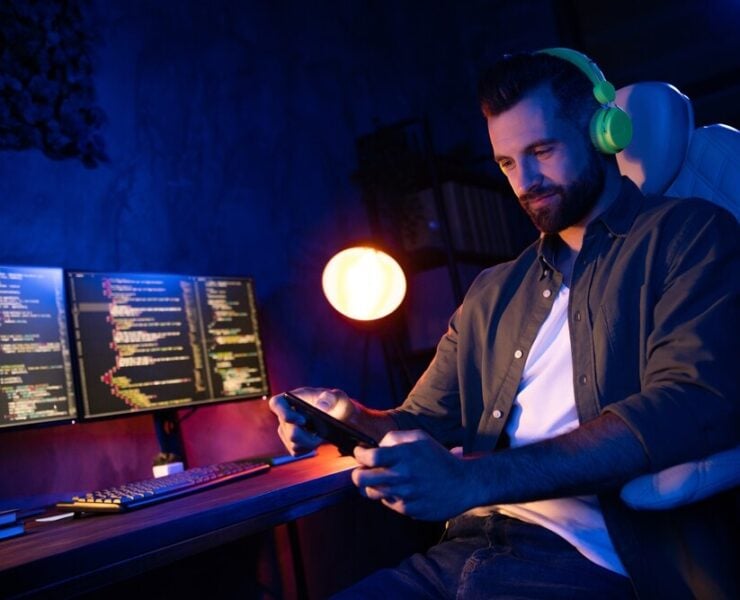TL;DR:
- Music licensing protects your game from takedowns, copyright claims, and legal headaches.
- Different licenses (sync, master use, public performance) cover different uses in video games.
- Developers often struggle with ownership confusion, high costs, and restrictive terms.
- HookSounds offers original, pre-cleared music for game developers with simple, transparent licensing.
Game developers know the thrill of finishing a level design or crafting a boss fight that finally feels just right. But drop in the wrong track without permission and suddenly you’re less “creative genius” and more “defendant in court.” That’s the reality of skipping over music licensing.
Music isn’t just filler for menus or background loops. It’s the heartbeat that sets the mood, makes players sweat in a chase scene, or feel unstoppable during a win. The catch? Using music the wrong way can land you in a tangle of copyright claims and headaches that no cheat code can fix.
The better route is understanding how licensing works so you can give your game the soundtrack it deserves—without the legal drama. Let’s break it down and make licensing as straightforward as leveling up your skills.
Why Music Licensing Matters in Game Development
Nothing kills momentum faster than a game getting muted or pulled because the soundtrack wasn’t cleared. Music licensing is what keeps your project safe and your soundtrack intact.
In gaming, music often becomes as memorable as the characters. A licensed track means players can enjoy that emotional punch without interruptions or copyright drama.
Licensing music for video games also protects your project’s future. If your indie hit suddenly takes off, you won’t be scrambling to swap out tracks or face takedown threats. Music rights licensing keeps your game playable, profitable, and drama-free.
Treat music as an asset, not an afterthought. With the right license, you can focus on building games that sound as good as they play.
Key Types of Music Licenses Game Developers Should Know
Game developers don’t need a law degree to understand music rights, but knowing the basics of a music license will save a lot of headaches. Here are the main types you’ll run into:
Synchronization License
This gives you permission to sync music with gameplay visuals. Without it, that epic battle track can’t legally live alongside your cutscenes.
Master Use License
This covers the actual recording of a song. If you want to use a specific version of a track, this is the license you need to secure.
Public Performance License
This applies when your game is streamed or broadcasted. If you expect players to share content online, this license helps keep their videos (and your game) free of takedowns.
Each type of music rights licensing serves a different purpose, and most games require more than one. That’s why pre-cleared music libraries like HookSounds make life easier. Instead of juggling multiple agreements, you can license music in a way that already covers the common use cases.

Common Challenges in Licensing Music for Video Games
On paper, licensing music for video games sounds simple: find a track, sign an agreement, and drop it in. In reality, developers often run into a few traps that can feel more like side quests than progress.
Who actually owns the rights?
A single track can involve multiple rights holders—the songwriter, the performer, the label, and sometimes a publisher. Tracking down each one feels less like creative work and more like detective work.
Unexpected costs
A catchy tune might seem perfect until you see the price tag. Traditional licensing often comes with fees that eat into budgets faster than loot boxes.
Restrictions that kill flexibility
Some licenses limit how and where the music can be used. That “perfect” track might only be cleared for a demo, leaving you stuck when it’s time to launch or expand to new platforms.
Confusing legal jargon
The fine print of a music license can be harder to decipher than a complex codebase. Developers want clarity, not contracts that read like ancient runes.
These hurdles are exactly why many game developers look for pre-cleared options.
The HookSounds Advantage for Game Developers
Game developers already juggle enough—from squashing bugs to balancing gameplay—so hunting for music shouldn’t feel like another impossible level. That’s where HookSounds comes in.
Our library was built with originality at its core. You won’t find recycled stock tracks that sound like every other indie trailer. Instead, you get fresh, curated music for game developers that matches the energy and personality of your project.
The real perk? The licensing is clear and straightforward. You don’t have to navigate a maze of hidden clauses or wonder if a song will suddenly come with extra costs down the line. Everything is designed to be transparent so you can focus on building your game, not interpreting contracts.
At HookSounds, we also offer versatility. From ambient background loops to cinematic scores, the catalog covers the moods and moments that keep players hooked. With the right soundtrack in place, your game doesn’t just play—it resonates.
In short, HookSounds gives developers the tools to create unforgettable experiences with zero licensing drama. Think of it as unlocking a cheat code for better soundtracks.
Leveling Up Your Game With the Right Music License
The best games leave players remembering more than the graphics or the mechanics—they remember how the whole experience felt. Music plays a huge part in that, and the right soundtrack can turn a good game into something unforgettable. Getting your licensing sorted from the start means your creative vision stays intact and your players get the experience you intended.
If you’re ready to give your game the soundtrack it deserves, HookSounds has you covered. Discover our royalty free music!



